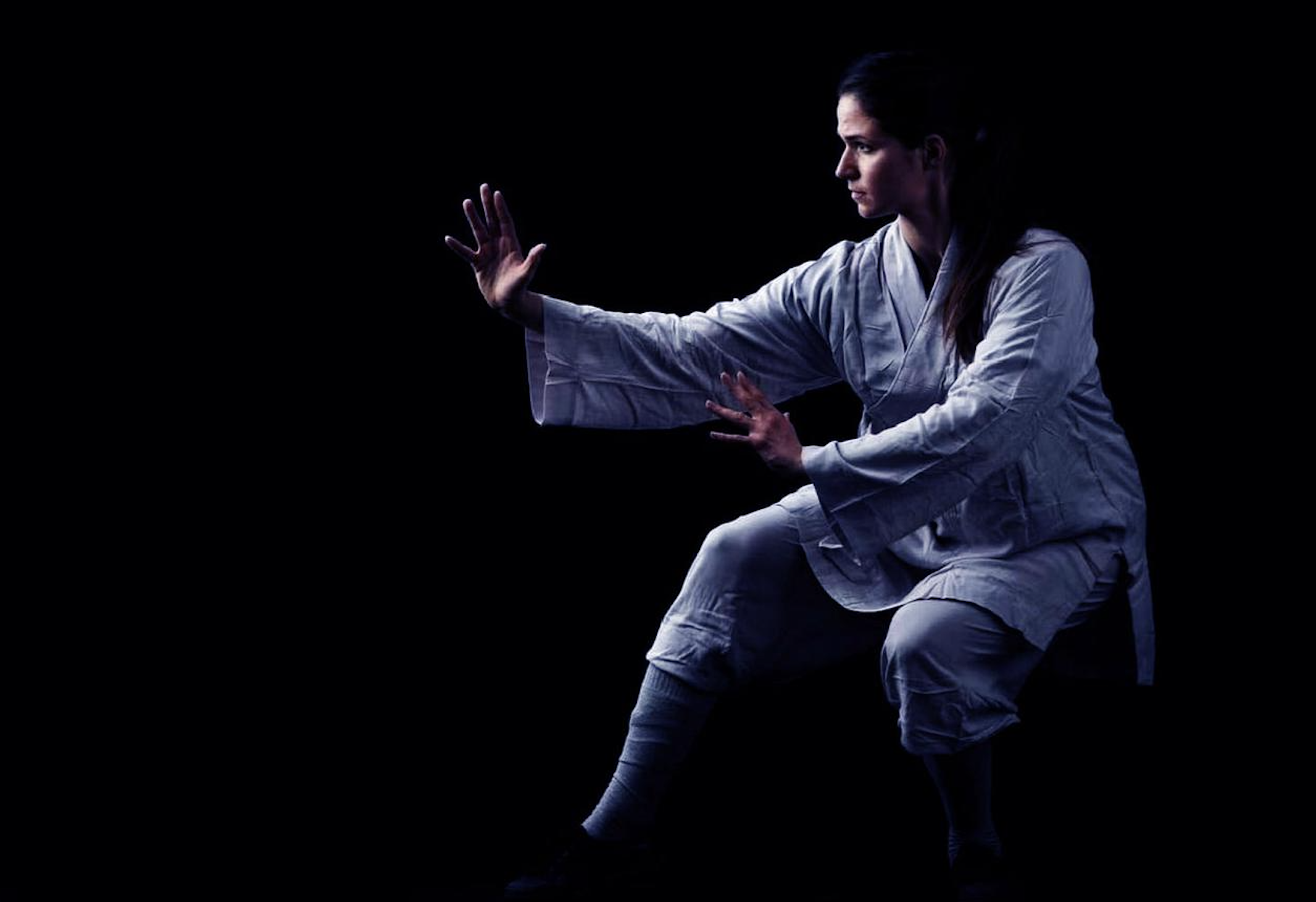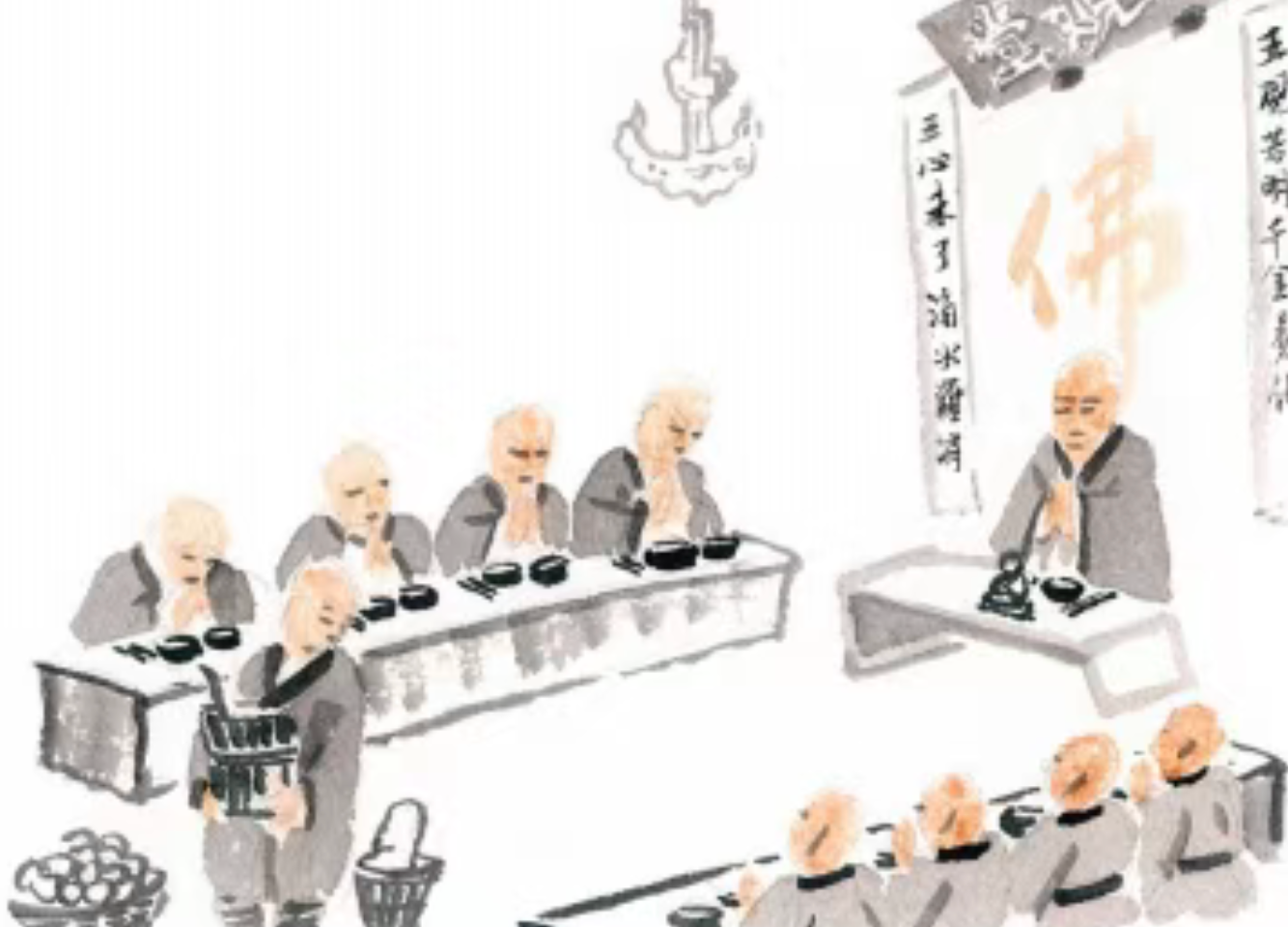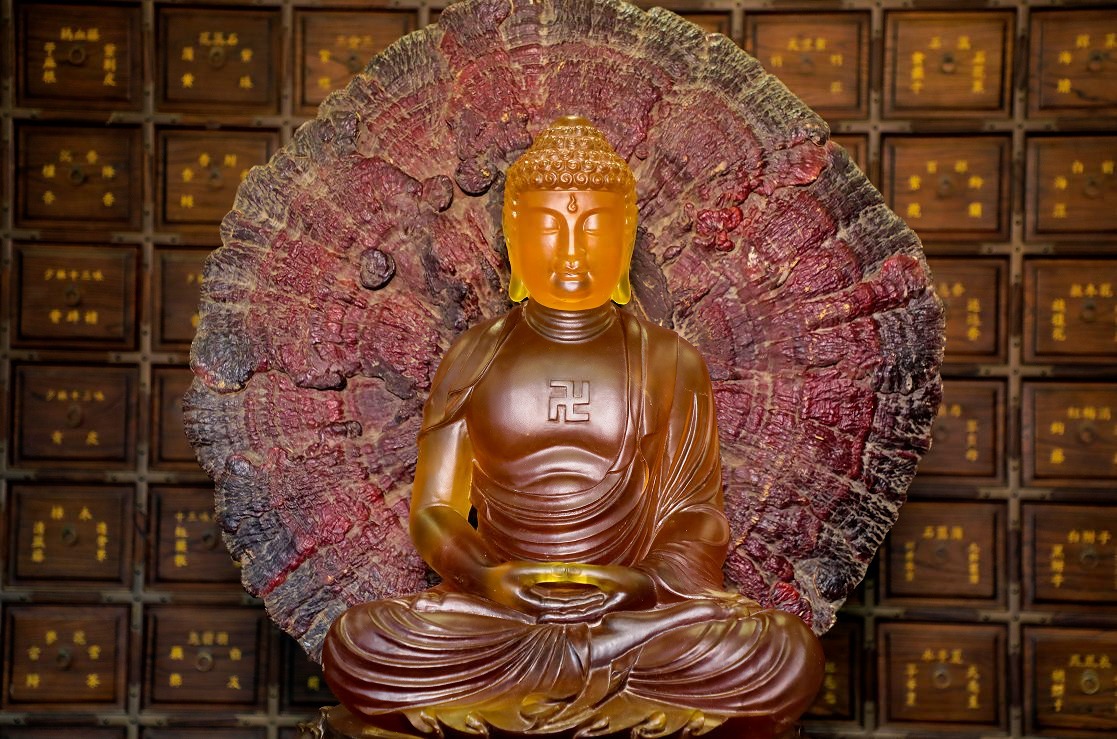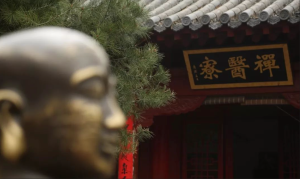
The wisdom of forbearance in Shaolin Temple is far from the simple endurance as commonly understood by the world. Bodhidharma taught in the Two Entrances and Four Practices: “Those who respond to resentment. When a practitioner endures pain during the cultivation of the Way, he should think about the countless kalpas in the past when he abandoned the root and pursued the branches, wandered in various realms, and generated numerous resentments, causing boundless harm.” This teaching reveals the profound wisdom of forbearance – by observing one’s own karmic causes and effects, the energy of angry emotions can be transformed.
In the ancient murals of Shaolin Temple, the characters for “forbearance” and “Zen” are often seen together. This implies that true forbearance requires the wisdom of Zen meditation as its foundation. Modern psychological research has found that when a person is in a state of mindfulness, the activity in the brain regions related to emotional regulation is significantly enhanced. This coincides with the cultivation sequence of Shaolin monks, which is “first cultivate concentration, then cultivate wisdom.”
I once witnessed how a Shaolin warrior monk responded to a provocation. He first took a deep breath, his gaze softened from sharpness to mildness, his hands naturally formed a mudra, and he softly chanted “Amitabha.” Afterwards, he explained, “Anger is like a wild horse. Forcibly holding the reins will only be dragged along. Only by first synchronizing with it can it be gradually tamed.” This method of emotional management combines breathing regulation, body awareness, and mindfulness observation, demonstrating the all – encompassing wisdom of Shaolin.
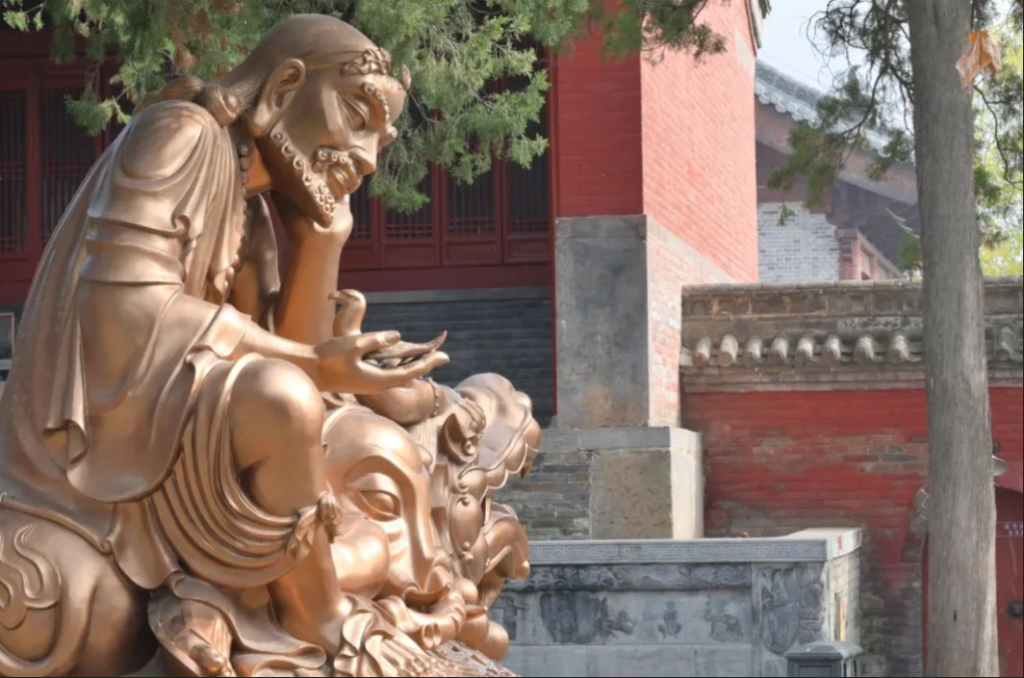
The Psychological View of Shaolin: Emotional Wisdom Beyond Binary Opposition
The psychological view of Shaolin is based on the philosophy of “dependent origination and emptiness of nature.” Emotions are regarded as temporary phenomena resulting from the combination of causes and conditions, neither truly existent nor truly non – existent. This middle – way thought provides a perspective beyond oppositional thinking for modern emotional management.
The Secret Manual of Shaolin Medical Sect records a unique method of emotional regulation: when strong emotions arise, imagine standing in the third – person perspective to observe. This “detached observation” method is strikingly similar to the “cognitive defusion” technique in modern psychotherapy. A Zen master told me, “Observe emotions as you observe clouds. Knowing that they come and go impermanently, you will not be attached to them.”
The morning bells and evening drums in Shaolin Temple are not only time markers but also good remedies for emotional regulation. When the bell rings initially, it is heavy and slow, gradually becoming clear and melodious, and finally returning to silence. This process symbolizes the complete course of emotions: from intense emergence, to natural flow, and finally to calming and transformation. Modern music therapy research has found that sound waves of specific frequencies can indeed regulate brainwaves and help balance emotions.
Incense and Bracelets: Spiritual Practice in Material Objects
In Shaolin tradition, incense is not only an offering for Buddha but also a tool for cultivating the mind. The Shaolin Incense Spectrum records, “Where the incense cloud rises, delusive thoughts cease instantly; when the incense smoke curls, right – mindedness continues.” This method of guiding the mind through smell is similar to the principle of modern aromatherapy. The steadiness of sandalwood, the profundity of agarwood, and the freshness of cypress each meet different emotional regulation needs.
Bracelets are also important aids in Shaolin cultural practice. Every time a bead is turned, it is a reminder to return to the present. The design of the [Five – Element Harmony Bracelet] is profound: wooden beads represent growth (corresponding to anger), fire beads represent rising (corresponding to joy), earth beads represent stability (corresponding to thought), metal beads represent contraction (corresponding to sorrow), and water beads represent descending (corresponding to fear). The mutual generation and restraint of the five elements are a vivid manifestation of the mutual transformation of emotions.
A lay Buddhist who has worn this bracelet for years shared, “Whenever my emotions fluctuate, touching beads of different materials and feeling their respective temperatures and textures, my heart naturally calms down.” This multi – sensory regulation method is more effective than simple psychological suggestion.

Relieving Anxiety: The Modern Application of Shaolin Mental Methods
The anxiety symptoms in modern society are regarded as the modern manifestation of “a restless mind and a wild horse” from the Shaolin perspective. Shaolin Temple has unique methods to deal with anxiety: first is the “thousand – jin drop” kung fu, which establishes a sense of security through the feeling of the soles of the feet being firmly on the ground; second is the “breath – counting meditation,” which uses each inhalation and exhalation as an anchor to stabilize the mind; and third is “walking meditation,” which coordinates the body and mind through slow and regular steps.
The Essentials of Shaolin Mind Regulation records, “When the mind is at peace, the qi flows smoothly; when the qi flows smoothly, the blood is harmonious; when the blood is harmonious, the essence is sufficient; when the essence is sufficient, the spirit is vigorous.” This holistic view of physical and mental health is gradually being verified by modern psychosomatic medicine. Research has shown that regular meditation can lower cortisol levels and increase the gray matter density in the prefrontal cortex, which are the physiological bases for relieving anxiety.
An enterprise executive who participated in Shaolin meditation shared, “In the past, I used caffeine to fight anxiety. Now I have learned to regulate with breathing. The ‘three – minute breathing method’ taught by the Shaolin master – observing the breath in the first minute, lengthening the exhalation in the second minute, and feeling the whole body in the third minute – is more effective than any energy – boosting drink.” This simple and practical method is the embodiment of the secularization of Shaolin wisdom.
Emotional Management from the Perspective of Martial Arts: The Art of Balancing Rigidity and Flexibility in Dealing with the World
Shaolin martial arts contain rich wisdom in emotional management. “Balancing rigidity and flexibility” is not only a principle of combat but also a philosophy of dealing with the world. Observing Shaolin warrior monks performing routines, you will find that their movements have both the power of thunder and the softness of flowing clouds. This ability to switch between rigidity and flexibility is an artistic manifestation of emotional regulation.
The “Mind – Intention Palm,” as a secret Shaolin kung fu method, emphasizes “the unity of mind and intention, the unity of intention and qi, and the unity of qi and force.” When practitioners can achieve this state of unity of body and mind, their emotions are naturally balanced and peaceful. Modern sports psychology has found that top athletes in competitions often enter a similar “flow” state, where emotions become aids rather than distractions.
A martial arts master who has practiced for thirty years said, “Practicing boxing is like cultivating the mind. Being too rigid is easy to break, and being too flexible is useless. It is the same with handling emotions. You need to find the middle way that is neither biased nor extreme.” This balanced wisdom has profound implications for modern people in dealing with workplace relationships and family conflicts.

Emotional Training in Daily Shaolin Practice
The daily life of Shaolin monks is itself a training ground for emotional management. The restraint of greed for sleep when getting up at the sound of the morning bell, the restraint of greed for food when having meals, and the restraint of laziness when doing labor all involve subtle emotional regulation every moment.
It is particularly worth mentioning the Shaolin practice of “silent meditation.” Keeping silent during specific periods not only reduces verbal karma but also provides an opportunity to observe the fluctuations of inner emotions. Modern research has found that regular language restraint can significantly reduce stress levels and improve emotional awareness.
The “combining farming with meditation” tradition in Shaolin Temple is also very meaningful. The repetitive actions during farming have a meditative effect, and the growth cycle of crops teaches people to wait patiently. A Zen master said, “Watching the vegetable seedlings grow day by day, you will know that you can’t be impatient; watching the fallen leaves return to the roots, you will know that you can’t be annoyed.” This life in sync with the natural rhythm is itself the best emotional regulator.
The Application of Shaolin Emotional Wisdom in Modern Life
To integrate the Shaolin emotional management wisdom into modern life, you can start with some simple practices: sit quietly for three minutes when getting up in the morning and feel your breathing; eat attentively without looking at your phone while having meals; practice the “one – minute Shaolin Zen” during work breaks – close your eyes, regulate your breathing, and smile; and use the [Five – Element Harmony Bracelet]to count things you are grateful for before going to bed at night.
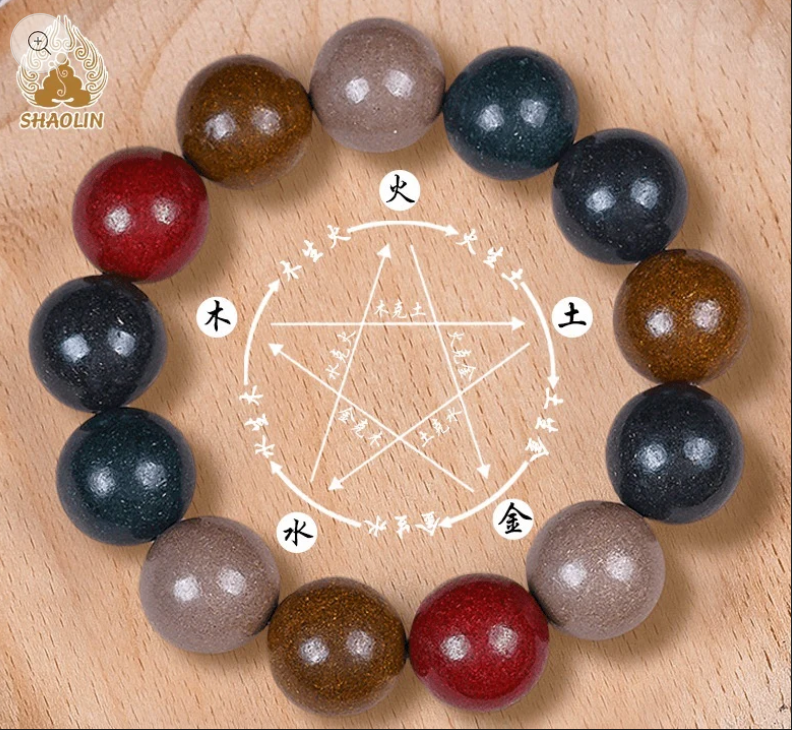
A teacher who applied Shaolin methods to education said, “Now when teaching children emotional management, we no longer just talk about theories. We do the ‘Shaolin emotional exercise’ together – when angry, use the ‘push – the – mountain palm’ to release energy; when anxious, use the ‘cloud hand’ to soften tension; when sad, use the ‘hug – the – ball posture’ to self – soothe.” This embodied learning method has a far better effect than simple preaching.
Shaolin Abbot Shi Yongxin once said, “What modern people need is not more knowledge but the practice of transforming knowledge into wisdom.” This is especially true in the field of emotional management. Knowing the theories of emotional regulation is far from enough. The key is to practice continuously so that these wisdoms can be integrated into the blood and become instinctive reactions.
True emotional freedom is not the absence of emotional fluctuations but not being trapped by emotions. Just like the thousand – year – old ginkgo tree in front of Shaolin Temple, which has experienced the changes of the four seasons, wind, frost, rain, and snow, yet still stands firmly. This state of becoming more composed after experiencing vicissitudes may be the highest art of emotional management.

Wu Xing Beads | Five Element Harmony Bracelet
Those seeking holistic balance and energy alignment. Individuals experiencing burnout.
Learn About This Shaolin Treasure